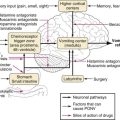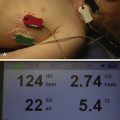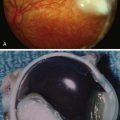Arthritis is a widespread and often debilitating condition that impacts countless people across the globe. Characterized by inflammation and stiffness in the joints, arthritis can significantly hinder a person’s ability to perform daily activities. Fortunately, physical therapy offers a range of benefits and strategies to manage arthritis effectively.
Understanding Arthritis
Arthritis is not a single disease but a term that encompasses over 100 different types of joint diseases. The most prevalent types are osteoarthritis and rheumatoid arthritis. Osteoarthritis is a degenerative joint disease caused by the breakdown of cartilage, which acts as a cushion between bones. This type of arthritis often affects weight-bearing joints such as the knees, hips, and spine.
In contrast, rheumatoid arthritis is an autoimmune condition in which the immune system erroneously targets the synovium, the membrane lining that encases the joints. This results in inflammation, discomfort, and ultimately damage to the joints.
Benefits of Physical Therapy for Arthritis Patients
Pain Relief
Pain is a primary concern for arthritis patients, and physical therapy can significantly reduce this symptom. Therapists employ a variety of techniques to manage pain, including:
- Manual therapy: Hands-on techniques such as massage and joint mobilization can reduce pain and improve joint function.
- Heat and cold treatments: Heat can relax tense muscles and increase blood flow, while cold can reduce inflammation and numb pain.
- Electrical stimulation: Methods like Transcutaneous Electrical Nerve Stimulation (TENS) can disrupt pain signals to the brain, providing relief.
Sometimes, finding effective pain relief can feel like a game of chance, one of which you can find if you click here. It takes time to find one that suits you and meets your personal needs based on the specifics of your conditions.
Improved Joint Function
Physical therapy aims to enhance the function of affected joints through targeted exercises. Building up the muscles surrounding the joints enhances support, which lessens the strain on the joints. This not only helps relieve pain but also boosts mobility and overall joint performance.
Enhanced Mobility and Flexibility
Maintaining and improving mobility and flexibility is crucial for arthritis patients. Regular physical therapy sessions include stretching exercises and range-of-motion activities that prevent joints from becoming stiff and enhance their movement. This makes it easier for patients to perform daily activities and reduces the risk of further joint damage.
Personalized Exercise Programs
Every arthritis patient is unique, and physical therapists develop personalized exercise programs tailored to individual needs. These programs ensure that patients engage in safe and effective exercises that promote joint health without causing additional harm. These exercises typically include:
- Strengthening exercises: Focus on the muscles surrounding the joints to provide better support and reduce stress on the joints.
- Aerobic exercises: Low-impact activities such as walking, swimming, and cycling improve cardiovascular health and help maintain a healthy weight, which is essential for reducing joint stress.
- Flexibility exercises: Stretching and range-of-motion exercises maintain joint flexibility and prevent stiffness. Practices like yoga and tai chi are also beneficial for enhancing flexibility and balance.
Strategies for Effective Physical Therapy in Arthritis Management
The first step in physical therapy is a comprehensive assessment of the patient’s condition. This involves reviewing the patient’s medical history, conducting a physical examination, and performing functional assessments. Based on this evaluation, the therapist sets realistic goals in collaboration with the patient, focusing on pain reduction, improved mobility, and enhanced quality of life.
Manual Therapy
Manual therapy includes hands-on techniques such as joint mobilization and soft tissue massage. These methods can significantly reduce pain, improve joint mobility, and enhance muscle function. Manual therapy is particularly effective for patients with severe stiffness and pain, providing immediate relief and improving overall function.
Pain Management
Physical therapists use various pain management techniques to help patients manage their symptoms effectively. These include:
- Heat and cold therapy: Heat treatments can relax muscles and increase blood flow to the affected area, while cold treatments can reduce inflammation and numb pain.
- Electrical stimulation: Techniques like TENS can disrupt pain signals to the brain, providing significant relief for arthritis patients.
- Ultrasound therapy: This involves using sound waves to penetrate deep tissues, reducing inflammation and promoting healing.
Patient Education and Lifestyle Modifications
Therapists teach patients about proper body mechanics, joint protection techniques, and ways to incorporate physical activity into their daily lives. This education includes:
- Joint protection techniques: Using assistive devices, avoiding excessive joint strain, and practicing good posture can help protect the joints and reduce pain.
- Healthy lifestyle choices: Maintaining a balanced diet, staying hydrated, and managing weight are essential for reducing joint stress and managing arthritis symptoms effectively.
Conclusion
Each patient’s journey is unique, and the tailored strategies provided by physical therapists ensure that patients receive the care and support they need to live well with arthritis. Through personalized exercise programs, manual therapy and pain management techniques, physical therapists empower patients to take control of their condition and lead active, fulfilling lives. Patients suffering from arthritis can now benefit from more advanced techniques to manage their condition.





